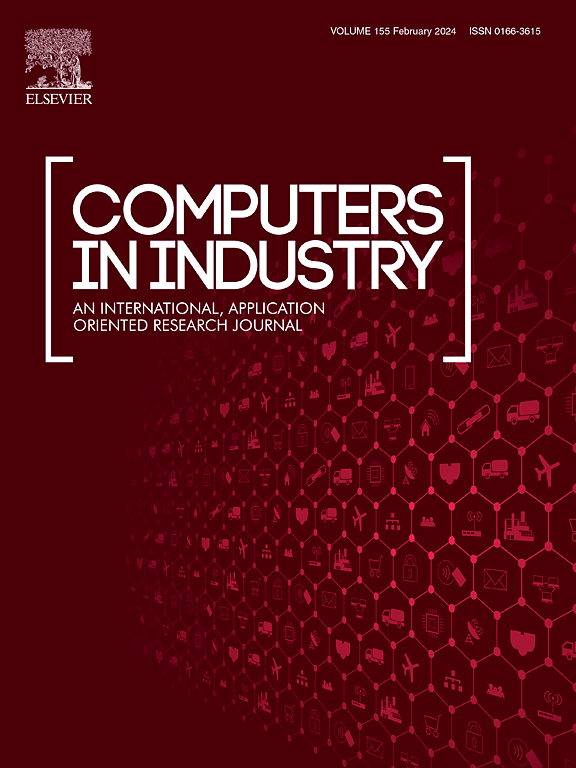求助PDF
{"title":"Prior knowledge embedding convolutional autoencoder: A single-source domain generalized fault diagnosis framework under small samples","authors":"","doi":"10.1016/j.compind.2024.104169","DOIUrl":null,"url":null,"abstract":"<div><p>The proposed transfer learning-based fault diagnosis models have achieved good results in multi-source domain generalization (MDG) tasks. However, research on single-source domain generalization (SDG) is relatively scarce, and the limited availability of small training samples is seldom considered. Therefore, to address the insufficient feature extraction capability and poor generalization performance of existing models on single-source domain small sample data, a novel single-source domain generalization fault diagnosis (SDGFD) framework, the prior knowledge embedded convolutional autoencoder (PKECA), is proposed. During the training phase, first, single-source domain data are used to construct prior features based on the time domain, frequency domain, and time-frequency domain. Second, a prior knowledge embedding structure based on the convolutional autoencoder is built, which compresses the prior knowledge and original vibration data into a high-dimensional space of consistent dimensions, embedding the prior knowledge into the features corresponding to the vibration data using a mean squared error loss function. Subsequently, the proposed centroid-based self-supervised learning (CBSSL) strategy further constrains high-dimensional features, improving the generalization ability. The designed sparse regularized activation (SRA) function significantly enhances the regularization effect on features. During the testing phase, it is only necessary to input the data from the unknown domain to identify the fault types. The experimental results show that the proposed method achieves superior performance in fault diagnosis tasks involving cross-speed, time-varying speed, and small sample data in SDGFD, demonstrating that PKECA has strong generalizability. The code can be found here: https://github.com/John-520/PKECA. © 2024 Elsevier Science. All rights reserved</p></div>","PeriodicalId":55219,"journal":{"name":"Computers in Industry","volume":null,"pages":null},"PeriodicalIF":8.2000,"publicationDate":"2024-09-07","publicationTypes":"Journal Article","fieldsOfStudy":null,"isOpenAccess":false,"openAccessPdf":"","citationCount":"0","resultStr":null,"platform":"Semanticscholar","paperid":null,"PeriodicalName":"Computers in Industry","FirstCategoryId":"94","ListUrlMain":"https://www.sciencedirect.com/science/article/pii/S0166361524000976","RegionNum":1,"RegionCategory":"计算机科学","ArticlePicture":[],"TitleCN":null,"AbstractTextCN":null,"PMCID":null,"EPubDate":"","PubModel":"","JCR":"Q1","JCRName":"COMPUTER SCIENCE, INTERDISCIPLINARY APPLICATIONS","Score":null,"Total":0}
引用次数: 0
引用
批量引用
Abstract
The proposed transfer learning-based fault diagnosis models have achieved good results in multi-source domain generalization (MDG) tasks. However, research on single-source domain generalization (SDG) is relatively scarce, and the limited availability of small training samples is seldom considered. Therefore, to address the insufficient feature extraction capability and poor generalization performance of existing models on single-source domain small sample data, a novel single-source domain generalization fault diagnosis (SDGFD) framework, the prior knowledge embedded convolutional autoencoder (PKECA), is proposed. During the training phase, first, single-source domain data are used to construct prior features based on the time domain, frequency domain, and time-frequency domain. Second, a prior knowledge embedding structure based on the convolutional autoencoder is built, which compresses the prior knowledge and original vibration data into a high-dimensional space of consistent dimensions, embedding the prior knowledge into the features corresponding to the vibration data using a mean squared error loss function. Subsequently, the proposed centroid-based self-supervised learning (CBSSL) strategy further constrains high-dimensional features, improving the generalization ability. The designed sparse regularized activation (SRA) function significantly enhances the regularization effect on features. During the testing phase, it is only necessary to input the data from the unknown domain to identify the fault types. The experimental results show that the proposed method achieves superior performance in fault diagnosis tasks involving cross-speed, time-varying speed, and small sample data in SDGFD, demonstrating that PKECA has strong generalizability. The code can be found here: https://github.com/John-520/PKECA. © 2024 Elsevier Science. All rights reserved
先验知识嵌入卷积自动编码器:小样本下的单源域广义故障诊断框架
所提出的基于迁移学习的故障诊断模型在多源领域泛化(MDG)任务中取得了良好的效果。然而,针对单源领域泛化(SDG)的研究相对较少,而且很少考虑小样本训练的有限性。因此,针对现有模型在单源域小样本数据上特征提取能力不足和泛化性能不佳的问题,提出了一种新型单源域泛化故障诊断(SDGFD)框架--先验知识嵌入式卷积自动编码器(PKECA)。在训练阶段,首先利用单源域数据构建基于时域、频域和时频域的先验特征。其次,建立基于卷积自动编码器的先验知识嵌入结构,将先验知识和原始振动数据压缩到维度一致的高维空间中,利用均方误差损失函数将先验知识嵌入到振动数据对应的特征中。随后,提出的基于中心点的自监督学习(CBSSL)策略进一步约束了高维特征,提高了泛化能力。设计的稀疏正则化激活(SRA)函数显著增强了对特征的正则化效果。在测试阶段,只需输入未知域的数据即可识别故障类型。实验结果表明,所提出的方法在 SDGFD 中涉及交叉速度、时变速度和小样本数据的故障诊断任务中取得了优异的性能,证明了 PKECA 具有很强的普适性。代码见:https://github.com/John-520/PKECA。© 2024 爱思唯尔科学。保留所有权利
本文章由计算机程序翻译,如有差异,请以英文原文为准。


